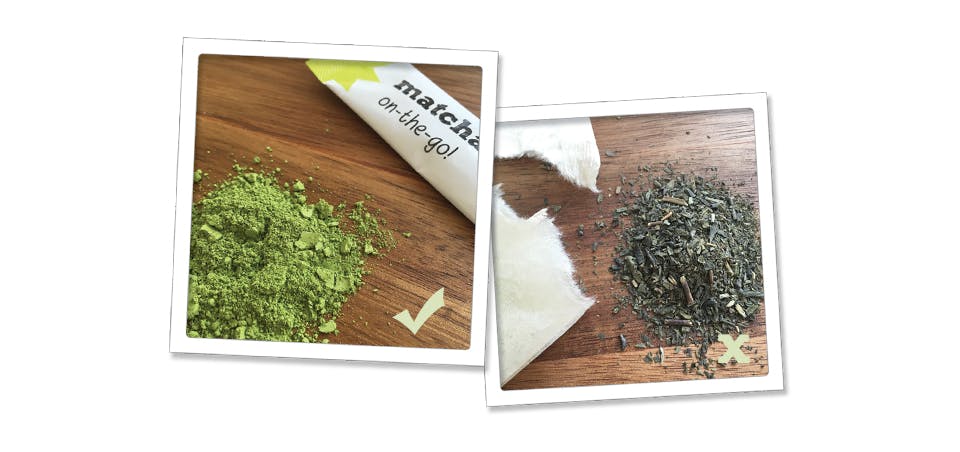
With so many different varieties of matcha on the market now days, it's important to know that you're getting the real deal.
A couple of basic things to keep in mind when on the hunt for your perfect matcha:
- It should always be a powder (loose....not in a teabag!)
- It should always be bright bright green
- It should be 100% pure green tea leaves
- The most authentic matcha is grown in Japan
It's also worth noting that not all matcha is harvested and produced in the same way - teapigs organic matcha is the real deal and here are a few reasons why:
The tea itself
- teapigs organic matcha is premium grade. Matcha can be produced in different grades - some are premium (top quality and nutrient rich), whilst others are poorer grades and contain fewer nutrients.
- teapigs matcha is organic. The green tea used for teapigs matcha is 100% organic, and has been certified by IMO Switzerland (EU organic, USDA organic) and JONA (Japanese organic). Some matcha teas on the market, which claim to be organic, are not actually certified.
- Only the leaf is used. Some types of matcha contain the stems and veins, which can dilute the nutritional value and leave it tasting bitter. Our matcha has had the stems and veins rigorously removed - we like to stick to our guns when it comes to quality and flavour.
How it is produced
- 3 layers of cover. teapigs organic matcha is grown with not 1, not 2, but 3 layers of cover. Not all matcha gets so much protection from the light, thus maximising the chlorophyll content.
- Careful hand-picking. Picked by hand by skilled workers ensures that only the young leaves and buds are used; this keeps the quality of matcha consistent.
- Granite grinding. teapigs organic matcha is ground in the traditional method using granite stones in a controlled environment, to prevent nutrient loss. Some matchas use air pulverisation methods to grind it down, but all that friction can cause loss of nutrients.
- Laboratory tested. teapigs organic matcha is put through lab testing to make sure it is perfect. We test everything from the particle size to the levels of nutrients, amino acids and catechins – so you know you're getting a great cup every time.
If it hasn't gone through these stages, it's not real matcha - rather, a green tea powder which won't contain nearly the same levels of good stuff you've come to expect from matcha!









